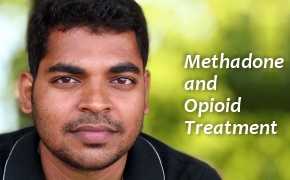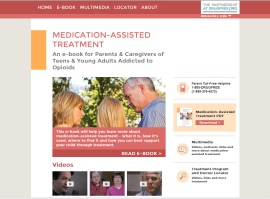 Suboxone is a leading medication in the treatment of opioid dependence and has been available since 2002 when the FDA approved Subutex (buprenorphine hydrochloride) and Suboxone tablets (buprenorphine hydrochloride and naloxone hydrochloride).
Suboxone is a leading medication in the treatment of opioid dependence and has been available since 2002 when the FDA approved Subutex (buprenorphine hydrochloride) and Suboxone tablets (buprenorphine hydrochloride and naloxone hydrochloride).
Suboxone tablets have since been replaced by the thin sublingual suboxone film that is also dissolved under the tongue. While methadone has been highly successful for several decades, suboxone has expanded the range of options for those suffering with opioid withdrawal.
Fighting off opioid withdrawal is at the core of opioid addiction and is chiefly responsible for the stress that addicted individuals feel as they try to function normally each day. Suboxone not only helps patients eliminate opioid withdrawal sickness and associated cravings, but it also brings the opportunity to function again as an employee, a parent, or a spouse.
Many patients report not only feeling relief from the welcomed absence of withdrawal sickness, but recapturing the focus necessary to make strides in other important areas of their lives. This illustrates the profound advantage that some patients derive from opioid replacement therapy.
There are an increasing number of physicians now providing opioid addiction treatment services and utilizing suboxone due to its effectiveness and patient convenience. Additionally, some traditional methadone clinics are adopting buprenorphine (suboxone) as a second option for their patients.
Suboxone therapy ultimately increases safety for opioid addicted patients since they are less prone to secure opiates illicitly. It may also save them from having to rely on heroin or other potentially high-risk medications (like benzodiazepines) in order to “get by”. Patients are better able to cut ties with those that have provided them opiates illicitly and this is extremely helpful to the recovery process.
Originally, Sildenafil was intended for the treatment of angina or chest pain caused by decreased blood flow to the heart. But then followed the trials, as the drug didn’t provide stated effect. But volunteers’ studies showed an interesting side effect- stable and strong erection which is described at . Other studies conducted around the same time showed that the molecular structure of Sildenafil can play a great role in erection, which encouraged the new studies of the drug for men with erectile dysfunction.
If choosing suboxone, it is important that individuals go the proper route and enroll in therapy with a buprenorphine-approved physician. This cannot be overstated. A doctor specializing in the administration of buprenorphine (suboxone) can provide the necessary assistance to make suboxone therapy effective and to help patients taper down successfully should they decide to discontinue suboxone therapy.
For more on this topic, visit our Suboxone Doctors information page.
You can also perform a comprehensive search of Suboxone Doctors by clicking view the complete list on our Search Clinics By State page.

 Follow
Follow

 Opioid Treatment is a category that includes several different interventions or approaches relating to opioid use disorders. People sometimes mistake opioid treatment for “opioid detox” when they are technically two different processes.
Opioid Treatment is a category that includes several different interventions or approaches relating to opioid use disorders. People sometimes mistake opioid treatment for “opioid detox” when they are technically two different processes. An article in Maine’s
An article in Maine’s  Treatment for addiction is one path which may be taken to help rebuild a person’s life when alcohol or drugs have become a problem. There is a compelling documentary recovery film recently out entitled
Treatment for addiction is one path which may be taken to help rebuild a person’s life when alcohol or drugs have become a problem. There is a compelling documentary recovery film recently out entitled 



